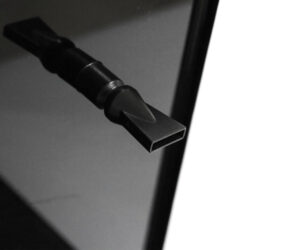Salt Water Aquarium Flow
In this guide we will break down why flow is important and the different methods of creating flow in your Reef Casa aquarium.
As we are trying to replicate ocean like conditions on our aquarium, all corals in our aquariums need some level of water flow. The water in the ocean is constantly moving due to currents, waves and tides and corals have adapted to live in this environment. Flow is important to help keep detritus from settling on corals and to also ensure that the waste products produced by corals (yes, corals produce waste) does not settle on them. Flow also helps to bring nutrients to the corals. Having said that, different types of corals prefer different levels of waterflow. SPS corals are happiest in areas of high flow, whereas LPS corals such as hammer and torch corals prefer more moderate flow levels. Some soft corals, such as mushrooms, do best with moderate to low waterflow. Flow in your aquarium is going to depend partly on your aquascape, how you place the rocks in your tank. It will also depend on the strength of your return pump and powerheads. It can take some adjustments to create the right flow pattern for a mixed reef tank but with the right equipment, and some patience, it can be done.

So what equipment is needed to create the right amount of flow in your new Reef Casa aquarium? Flow is created by two pieces of equipment, the return pump and wavemakers. Our studio series of aquarium at Reef Casa have been designed to have optimal and sufficient flow without the use of power heads. All of our all in one systems include an ultra silent return pump that is matched to the size of the tank. The adjustable return nozzle allows for the waterflow from the return pump to be aimed where it is needed in the aquarium. Generally, water will flow in a circular pattern, with waterflow from the return nozzle hitting the front wall of the tank, reversing direction counterclockwise, and heading back towards the water inlets at the top of the tank. This can mean that, depending on the design of the aquascape, the bottom of the tank near the front wall may be a fairly high flow area. The diagram below illustrates the basic flow pattern in a tank with a single return nozzle.
For reefers who are looking to keep LPS and soft corals in their Reef Casa aquarium this may be all the flow that is needed initially. However, for those planning on keeping SPS corals a wavemaker may also be worth considering for Reef Casa models that are 12 gallons or larger. A wavemaker is what it sounds like, essentially a small pump that sits inside the aquarium and helps to increase the waterflow with wave motions. We recommend placing the wavemaker on the side wall opposite the return nozzle. There are many different options available at various price points, but we recommend DC models with a controller that will allow you to vary the speed of the pump to suit your needs.
What can make flow difficult to master is that, unlike lighting, flow is largely invisible. The best way to determine whether the flow level is appropriate is to look at your corals. The polyps on SPS corals should be extended and visibly moving. The tentacles of corals such as hammer and torch corals should be moving in the water but not being blown around aggressively. Flow that is too high can cause their tentacles to retract or even tear. If you find that one area of your tank has flow that is either too high or too low, try adjusting the angle of the return nozzle or moving the wavemaker, if you are using one. It can take reefers of all experience levels some time to find the right flow pattern for a new tank so just make sure to take your time and watch how your corals react to any changes that you make. If you have any questions about waterflow please feel free to reach out to us. Happy reefing!

